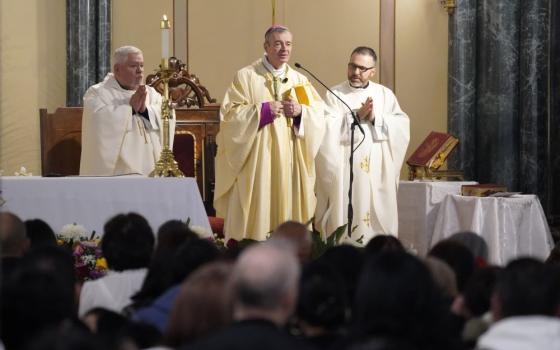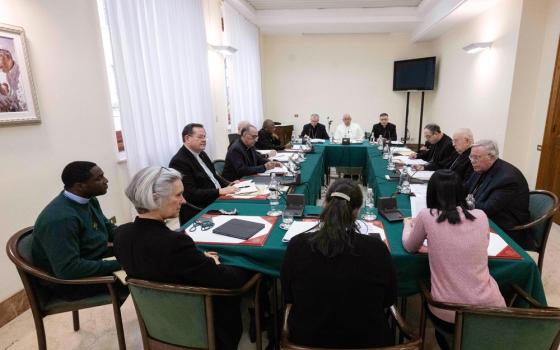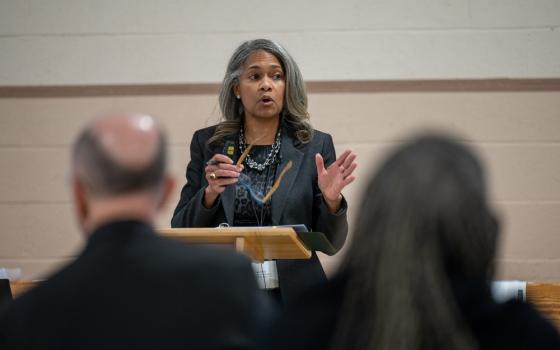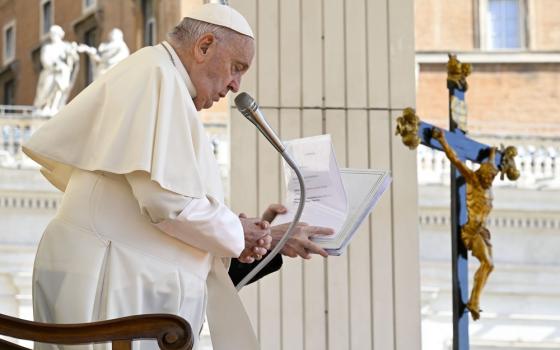
When a major research project on Catholic life in the United States began to release findings earlier this year and revealed that the average Catholic parish now serves more than 1,000 households, a collective sigh came from some corners.
Grumblings could be heard: This is exactly what is wrong with the church today. Because we have fewer priests, diocesan bureaucrats are consolidating parishes into ever-larger worshiping bodies. The sense of community is lost. Parishioners feel alienated, and more Catholics leave.
But people who minister and worship in a megaparish will tell you that these criticisms are either overblown or could be leveled against any parish of any size. They will tell you that the megaparish model offers opportunities that may offset the disadvantages.
Megaparishes have the resources to provide diverse, dynamic, inspiring liturgies; an unbelievable array of ministry opportunities; and a chance for lay parish leadership unmatched by smaller parishes.
In 2010, the average number of households per U.S. Catholic parish was 1,167, compared to 855 in 2000, according to a study for the Emerging Models of Pastoral Leadership Project conducted, with funding from the Lilly Endowment, by the Center for Applied Research in the Apostolate of Georgetown University in Washington.
In 2000, just one-quarter of the nation’s parishes had more than 1,200 registered households. By 2010 that had grown to one-third, the study found.
The Emerging Models project is an initiative of the National Association for Lay Ministry and four other national organizations interested in pastoral leadership and its development in Catholic parishes.
With fewer priests being ordained and active priests aging -- one out of every three active diocesan priests is over the age of 65, according to a CARA study on priests -- “dioceses are feeling the pinch when it comes to the availability of priests,” said Christopher Anderson, executive director of the National Association for Lay Ministry.
How most dioceses cope is with multiparish pastoring, Anderson said, where one pastor is in charge of more than one parish.
Megaparishes aren’t the norm, but you can find them across the United States, he said. The larger parishes tend to be in the suburbs.
Big-parish advantages
Big parishes work for a number of reasons, said Fr. Patrick Brennan, resident priest/associate pastor at St. Thomas the Apostle Catholic Church in Naperville, Ill. But being big alone doesn’t attract people, he said.
“Some of the advantages [of being big] are that it’s just exciting to be part of a movement of faith,” he said. “They’re magnetic; there’s a contagion about them.”
Brennan’s full-time job is director of mission integration and pastoral care at The Clare, a retirement community run by the Franciscan sisters of Chicago. Being a resident priest at St. Thomas means he helps out on the weekends.
He has been the director of the National Center for Evangelization and Parish Renewal since 1984 and used to be the director for the office of evangelization at the Chicago archdiocese.
To make these parishes work takes a lot of effort on behalf of all.
Besides Brennan, St. Thomas has a full-time pastor, Fr. Joel Fortier, as well as a full-time associate pastor, five deacons and 29 laypeople on staff.
St. Ann Catholic Parish in Coppell, Texas, was formed in 1984 with only 75 families, who then petitioned the Dallas diocese for mission status in order to have a priest celebrate Mass in the church building they had rented, according to the parish Web site. By 1989, St. Ann had 850 registered families. Today, it has more than 8,500 registered families.
The parish is staffed by its pastor, Msgr. Leon Duesman, and 35 full-time laypeople. There is a parochial vicar, three deacons and visiting priests as well.
St. Ann’s financing is in good standing, which is common for megaparishes even though, according to the Emerging Models project study, larger parishes tend to collect smaller offertories per person than smaller parishes. In 2010, St. Ann had a total pledge of $3,442,674 from only about one-fourth of its parishioners.
Megaparishes can have as many as seven Masses each weekend, and some have certain Masses focused on an age group, such as a teen Mass that is for the whole congregation but includes such features as a teen choir or teen volunteers. And because nearly 2,000 families at St. Ann are Hispanic, two of its seven weekend Masses are in Spanish.
The ingredients of an attractive church, Brennan said, are liturgy that is a religious experience; preaching that offers people a livable spirituality; genuine experiences of connection with God and with other people; and ministries that address real-life needs.
Brennan has a background in large parishes. For 14 years, he was pastor at Holy Family Parish in Inverness, Ill., right down the street from Willow Creek Community Church, the nondenominational evangelical megachurch.
“Quality preaching is very, very integral to attracting people to a church,” he said. He tried to build a team of wonderful preachers, priests from the outside who came on weekends to preach and were almost like family to the people.
Religious education should be not just for kids but for the whole family and with a deliberate focus on evangelizing and catechizing the family, Brennan said. Music, especially contemporary Christian, he said, attracts people as well. St. Thomas has seven different choirs for parishioners to join, from a large adult choir to the Joyful Jammers for middle-school children.
Ministry is prime
People are hungry for meaning and hungry for connections, Brennan said, and having vibrant ministries is one way to connect. Brennan chalks up the strong bonds between parishioners to the church ministries in which people are involved. The ministries challenge people to take a more active role in the church, which in turn gives them more responsibility.
Because of the number of people and resources, these megaparishes are able to support many ministries.
Some of St. Thomas’ nearly 126 ministries are Ecumenical Outreach, Bread Baker, Pat-a-Cake Ministry, choir, gardeners and Retreat Ministry.
St. Ann has -- among other ministries -- youth groups, marriage support groups, Christ Renews His Parish, Bible study, prayer shawl ministry, and That Man Is You, a program that helps men address challenges they face.
Although engaging in ministries is a factor in keeping a church strong, with so many people it is easy to leave the work for everyone else.
“People get involved in what meets their fancy, but obviously some fall through the cracks, but that’s true at every parish,” said Duesman, resident pastor at St. Ann for the past six years. He’s 72 -- two years older than the average age at which priests retire -- and will be retiring at the end of June.
Although he cannot be present at every meeting of the numerous ministries, Duesman reminds people that Jesus trumps all: “Jesus said, ‘Where two or three are gathered there I am in their midst.’ ”
It’s mythic in the worst sense of the word to think that a single man can pastor 4,000 households, Brennan said. “A pastor has to empower parishioners to pastor each other, and that’s what I think the small Christian community phenomenon is all about.”
“When you get parishes of this size, obviously you can’t get to know everyone,” Duesman said. You focus on what’s in front of you and you have to depend on your staff, he said. This model encourages lay leadership. The laity gain more responsibility, and the pastor is not overworked.
Good staffing and good governance is needed, Brennan said. At Holy Family, the parish governance broke into eight leadership communities and each team had a professional staff director to help parishioners run the ministries.
“The challenge is we need true leaders -- and I make the distinction between leadership and authority,” Brennan said. “Authorities maintain the status quo of things, but leaders help people to face the challenges before them and help people change. True leaders are always giving power back to the people instead of doing things for them.”
The next two phases of the Emerging Models project will be later this year and look deeper into the parish: first with a survey of parish staff and other parish leaders, and then with in-pew surveys of parishioners.
[Zoe Ryan is an NCR intern. Her e-mail address is zryan@ncronline.org.]



